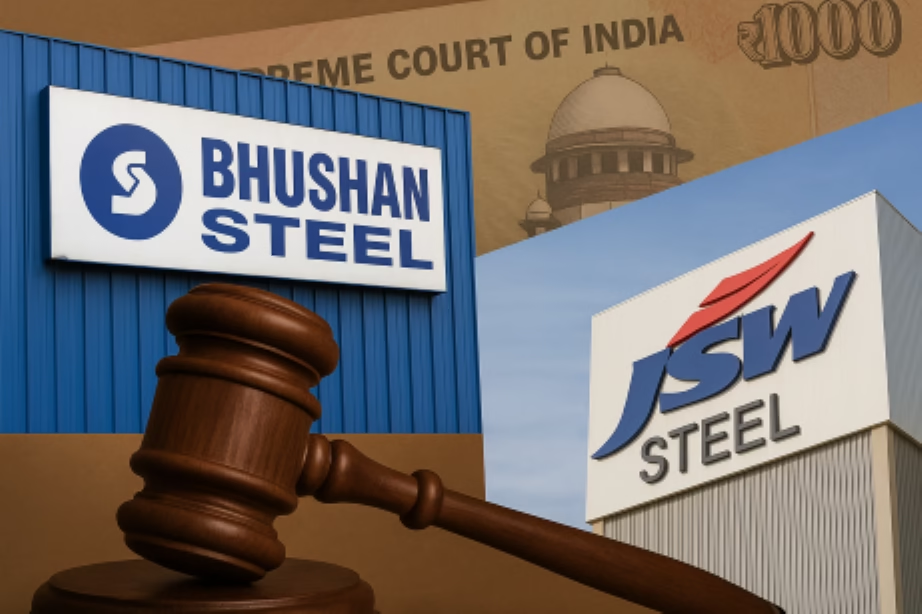Bhushan Power Supreme Court Ruling: The Supreme Court’s recent decision to liquidate Bhushan Power & Steel Ltd. (BPSL) has sent shockwaves through India’s insolvency framework, raising critical questions about the balance between procedural adherence and economic pragmatism.
Table of Contents
Background: A Landmark Case in India’s Insolvency Landscape
BPSL, once among India’s largest steel producers, was part of the Reserve Bank of India’s “dirty dozen”—a list of major defaulters targeted for resolution under the Insolvency and Bankruptcy Code (IBC) of 2016. In 2019, JSW Steel’s ₹19,700 crore resolution plan for BPSL was approved by the Committee of Creditors (CoC), the National Company Law Tribunal (NCLT), and later by the National Company Law Appellate Tribunal (NCLAT). However, the Supreme Court, in a May 2, 2025 ruling, annulled this plan, citing significant procedural lapses and legal transgressions .
The Supreme Court’s Rationale
The apex court identified multiple infractions in the resolution process:
- Procedural Lapses: The court found that the resolution process exceeded the 330-day timeline stipulated under the IBC, including time consumed by litigation, without justified exceptions.
- Non-Compliance with Section 29A: There were deficiencies in verifying the eligibility of resolution applicants, raising concerns about adherence to Section 29A of the IBC .
- Irregularities in Plan Implementation: The use of Optionally Convertible Debentures (OCDs) by JSW Steel to fund the acquisition was deemed non-compliant with the IBC, as the law expects clear and committed payment sources .
Consequently, the court ordered the liquidation of BPSL and mandated the return of payments made by JSW Steel to creditors and equity contributions within two months .
Click on the picture below to Open Demat account with Zerodha

Bhushan Power Supreme Court ruling: Economic and Legal Implications
The liquidation of BPSL, a company that had begun to show signs of operational recovery, is expected to have several adverse effects:
- Value Destruction: Liquidation often yields significantly lower recoveries for creditors compared to resolution. In BPSL’s case, the originally approved resolution plan had proposed a recovery of approximately ₹19,000 crore for financial creditors. Liquidation will likely result in a fraction of that value .
- Impact on Stakeholders: Employees face job losses, and operational creditors, who stand behind in the liquidation waterfall under Section 53 of the IBC, may recover little to nothing.
- Investor Confidence: The ruling has raised concerns among international investors about the predictability and stability of India’s insolvency framework. The possibility of judicial reversals years after acquisitions could deter future investments .
A Missed Opportunity for Balanced Justice
While the Bhushan Power Supreme Court ruling’s strict adherence to procedural norms underscores the importance of legal compliance, critics argue that the decision overlooked viable alternatives that could have preserved economic value:
- Consideration of Alternate Bids: Reports indicate that other bidders, including Tata Steel and Liberty House, had submitted plans during BPSL’s insolvency process. The court could have directed the CoC or NCLT to evaluate these alternate plans .
- Precedents for Flexibility: In previous cases like Jaypee Infratech and Educomp Solutions, courts allowed fresh resolution plans to be considered after protracted litigation, guided by the economic reality that liquidation is often value-destructive.
By opting for liquidation, the court may have prioritized procedural purity over the IBC’s broader objectives of value maximization and enterprise preservation.
The Road Ahead: Reassessing the IBC Framework
The BPSL ruling serves as a wake-up call for stakeholders in India’s insolvency ecosystem:
- Need for Timely Resolutions: The case underscores the importance of adhering to the IBC’s timelines to avoid automatic liquidation of debtor companies.
- Strengthening Institutional Processes: Ensuring rigorous compliance checks and transparent processes can prevent similar pitfalls in future resolutions.
- Balancing Legal Rigor with Economic Realities: Courts and regulators must strive to balance strict legal compliance with the economic objectives of the IBC, ensuring that procedural enforcement does not come at the cost of value destruction.
As JSW Steel seeks legal recourse and the National Company Law Tribunal (NCLT) prepares for further hearings, the BPSL case will continue to influence discussions on the efficacy and evolution of India’s insolvency framework.
Disclaimer: Readers to note that the views expressed are for educational purpose. Not meant to be any kind of recommendation for trading / investment. We are not a SEBI registered entity.



